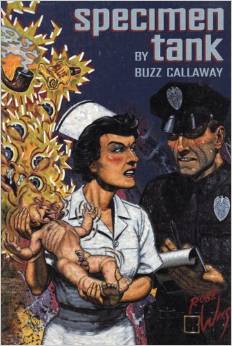Gynocracy and its Discontents
Every now and again an upstart crow breaks free from the ivory tower and lands on the lawns of popular nonfiction. The usual fate for such books is to appear on coffee tables and on morning talk shows and this, Gynocracy and its Discontents, is no exception, more argued about than read, as it has been dragged into the culture wars by both left and right, leaving neither side satisfied except, of course, for Knopf, which has an unexpected hit on its hands. Gynocracy and its Discontents is no bestseller to be sure, but it is talked about and written about and built into the impressive displays one passes on the way to the double latte counter.
     It is Dr. Babel’s lively wit that keeps those readers brave enough to open its pages going through the house of mirrors she constructs out of marriage manuals, obscure plays, popular broadsides, cookbooks, Acts of Parlement, and, most important of all, the letters, diaries and literary works produced both by and about the women of Elizabethan England.
     At the still center of this contentious world is Dr. Babel’s thesis that for a time women ruled England and that Elizabeth was not just rhetorically, but actually worshipped as a divine monarch, the Goddess of ancient Britain. This had profound effects upon the psyches of her male subjects, fulfilling the forbidden fantasy of mother-son incest. In psychoanalytic terms, the Mother, in the person of the Queene, possessed the Phallus, a psychoanalytic impossibility, which provokes an unprecedented Oedipal crisis in her courtiers and artists. This is the era of Spenser’s The Faerie Queene and Sydney’s Arcadia, to say nothing of the works of Shakespeare. Gynocracy and its Discontents describes their work as a descent into the realm of the Semiotic, a liminal psychic region best represented by Oberon and Titania’s Arcadian hideaway at the edge of stodgy old Theseus’s Athens, where opposites mutate into each other, unleashing a torrent of poetic language and metaphor. Dr. Babel’s early chapters lay the theoretical groundwork for this and could scare off potential readers interested in more substantive matters; however, she is deft in her navigation of the theories of Freud, Lacan and Kristeva, making the abstruse seem fairly straightforward.
     She further complicates things by weaving in a historical narrative asserting that a subterranean women’s network, in existence for centuries, served as Elizabeth’s power grid. By carefully controlling the marriages, dress and access to court of her courtiers she was able effectively to rob them of power, or castrate them. At one point she refers to Elizabeth and her maids as, “Bare-breasted Amazons, riding their men like horses.â€
     Instead of rounding up the usual suspects, Essex, de Vere, Raleigh and Leicester (to name a few) she shows us the women, Mary Sydney, Penelope Devereux, Anne and Elizabeth Russell, Francis Walsingham and Mary Herbert. The interlocking biographies are confusing at times and a flowchart might have been useful.
     The final chapters are devoted to the discontents of her title, or what she refers to as, “A regime of misogyny under James the First, and the birth of a darker, more analytical Euripidean drama exemplified by the works of Thomas Middleton.â€
           I wonder what our age will look like to the Sally Babel’s of four hundred years hence, if there are any.
Â



